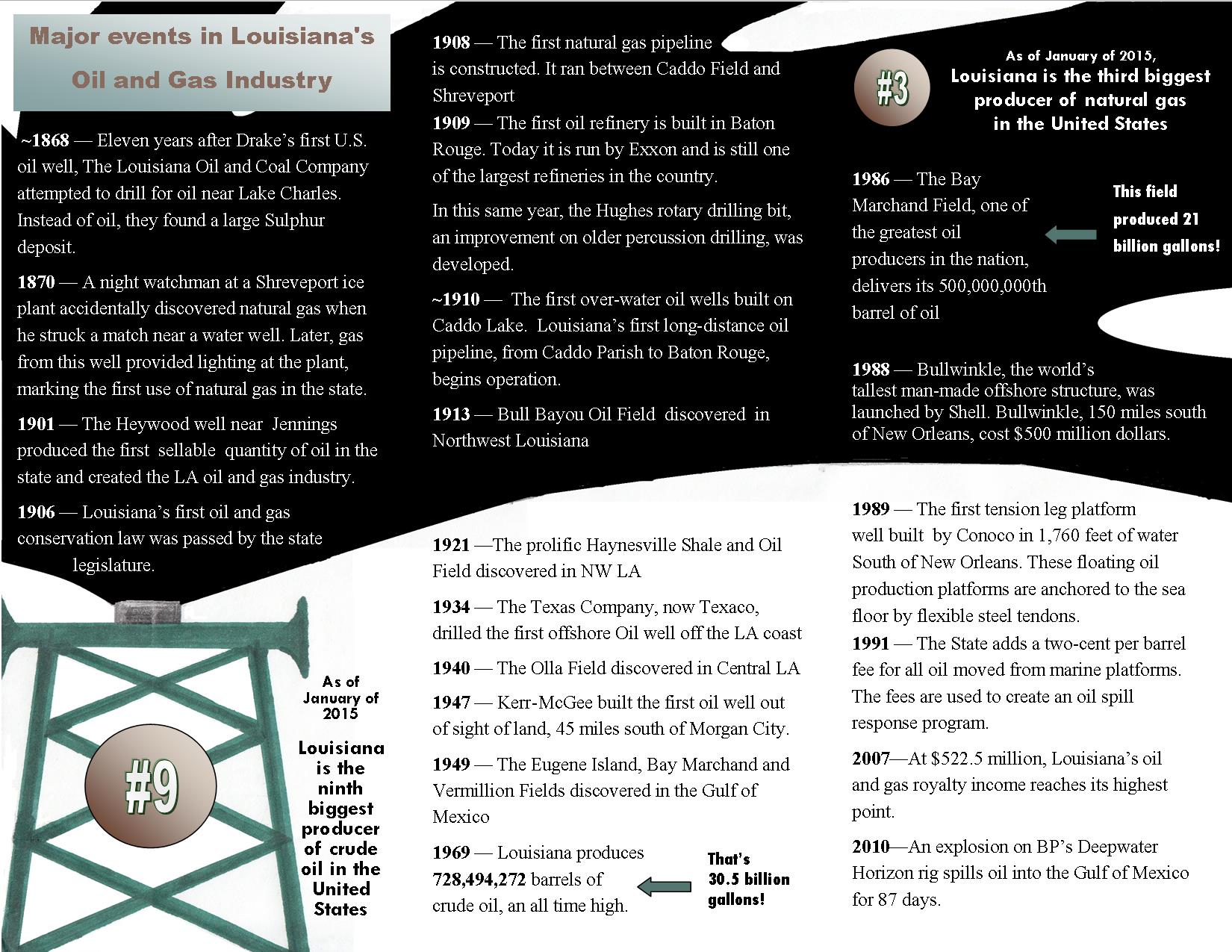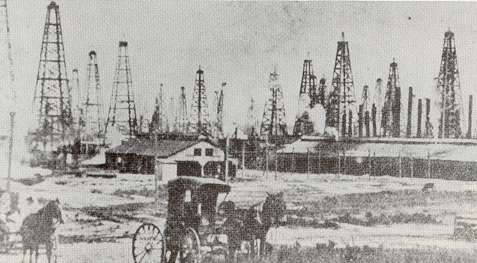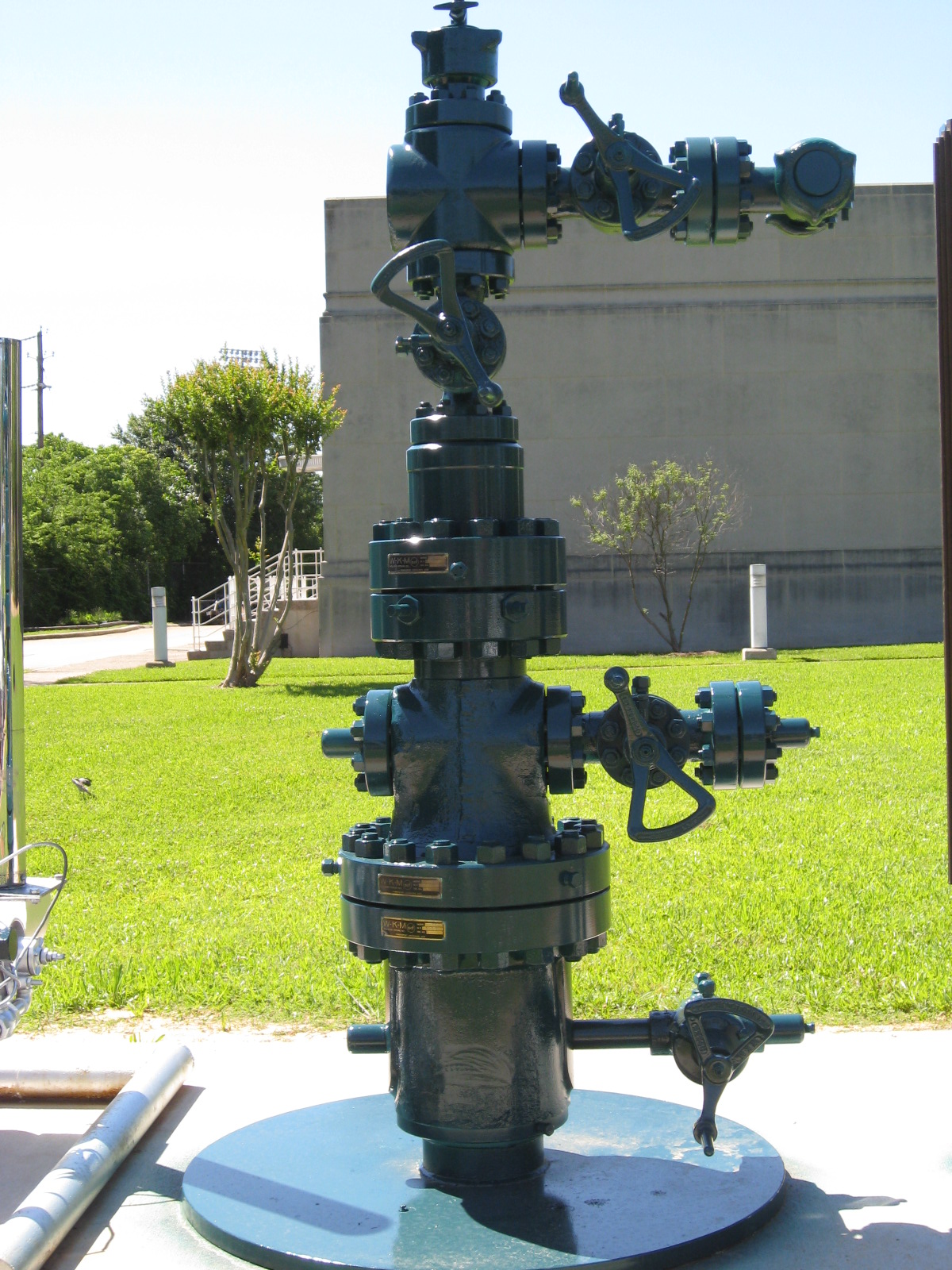[rev_slider oilproduction]

Oil rigs like the ones in this Diorama were used on the Rodessa Oil field in the 1930s. In this type of rig, a drill-bit on the end of a large pipe is sent deep into the ground by the see-saw motion of the large arm, or “walking beam.” Once the bit reached the reservoir rock, a few thousand feet below the surface, pipe would be replaced. The new pipe would use the same see-saw motion to draw oil from the ground. Using the natural release of pressure the oil would travel up the pipe where it was stored in large oil drums. When the pressure was too much for the pipes to handle it would spew out of the top of the tower, as can be seen in the LSEM frescos.
Early in the oil rush, men drilled wherever they thought oil might be. This was often very close to other drilling sites, resulting in oil fields like Rodessa and Lake Charles. Today, large cylindrical samples of rock are drilled out of the ground in a grid like fashion. These core samples are used to verify the size and shape of oil and mineral deposits prior to the initial drilling.

Photo source: http://dnr.louisiana.gov/assets/TAD/education/BGBB/6/la_oil.html
Many different pumps and controls are used to control the pressure, speed, and amount of oil in a well. Controls like these are placed on top of a well to control the pressure of oil inside and increase the stability of the underground well structure. The most well-known control structure type is the “Christmas Tree,” a large tower of valves that roughly resembles a holiday tree. Pictured on the right is a 1940s era ‘Christmas Tree.’ This particular Tree sits outside the museum. It was used by the United Gas Pipeline Company and could hold 30,000 pounds of pressure. This diorama shows a “choke manifold” structure which controls the release pressure between the well-head and the processing equipment.

Further Reading:
- This page from the U.S. Energy Administration gives modern information on how Louisiana compares to other states in energy production and consumption.
- This archived page produced by the LA Department of Natural Resources is full of historical pictures and practical explanations of how drilling works.
- This page produced by the Louisiana Mid-Continent Oil and Gas Association presents a timeline on the history of drilling in Louisiana.
- This Master’s thesis by Debra Kay McGinnis-Helton is one of the best sources for anyone looking to learn more about early oil production in North Louisiana. McGinnis-Helton,Debra Kay. “The Impact of the Oilboom on Caddo- Parish Louisiana, 1900-1939.” MA thesis: Louisiana Tech University,1999.Print.
Banner photo: Bull Bayou oil fields in 1919 Library of Congress, Prints & Photographs Division, Panoramic Photographs Collection, photograph by Grabill Studio, Shreveport. http://www.loc.gov/pictures/item/fsa1997023554/PP/

